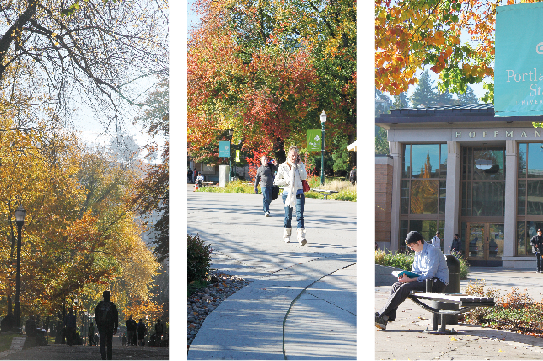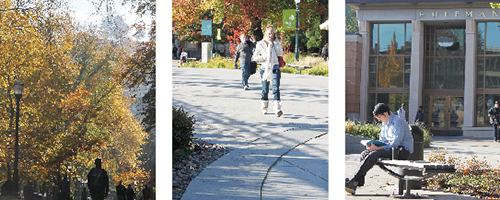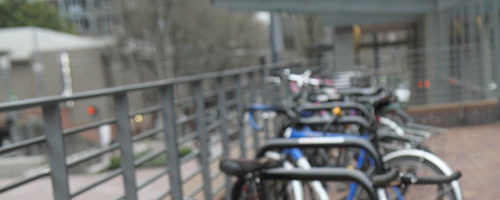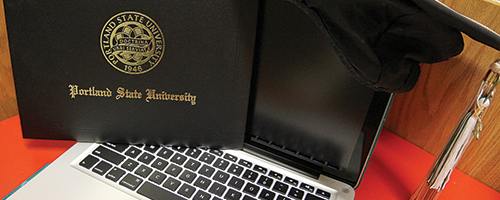Portland State, Oregon’s largest university, hopes to expand its student base as well as its physical presence in downtown Southwest Portland. PSU President Wim Wiewel told Oregon Public Broadcasting that one of the things that drives him crazy is when people say they know PSU is at the southern end of downtown but don’t know precisely where it is.
Bigger, bigger and bigger

Portland State, Oregon’s largest university, hopes to expand its student base as well as its physical presence in downtown Southwest Portland. PSU President Wim Wiewel told Oregon Public Broadcasting that one of the things that drives him crazy is when people say they know PSU is at the southern end of downtown but don’t know precisely where it is.
Wiewel wants to make PSU more visible. One way to do this is by increasing enrollment, which will lead to university expansion. Part of this desire is to help the state achieve its 40-40-20 plan, which set a goal of having 40 percent of adult Oregonians earn a bachelor’s, master’s or doctorate degree while 40 percent earn an associate’s degree and the remaining 20 percent earn a high school diploma.
The aim is to meet these numbers by 2025.
According to Wiewel, in order for Oregon to reach its long-term college graduation goals by 2025 PSU’s enrollment will need to expand to roughly 40,000 students. At the current rate of 700 new students per year, PSU is close to the 1,000 new students per year needed to help reach these long-term goals.
But there are some serious pros and cons to expanding the university by nearly a third.
New buildings would have to be constructed or purchased—an expensive undertaking. This would include the construction of more student housing and classrooms, and perhaps more buildings to hold the greater number of administrators needed to serve such a large student body.
Don’t forget about parking structures, either, especially if there are to be more student housing buildings.
There would be a necessary influx of professors and different types of staff, and the library and current computer labs’ ability to serve 40,000 students would be stretched. The ability to get around campus quickly will be undermined as the campus will undoubtedly grow eastward, which is too bad because I like how the Park Blocks serve as the campus’ central location.
One great aspect of an urban university is how compact it is—you can easily get from class to class in a short amount of time. This would change as the campus grew bigger and bigger.
Wiewel addressed the issue of increasing student housing. Most of PSU’s students live off campus. By constructing more student housing buildings and drawing students to fill them, the physical presence of more students on campus would increase the university’s visibility. With more PSU students walking and shopping downtown, it would be obvious that a university is nearby.
However, a caveat to having more new structures, especially student housing buildings, is that they would blend in with the other towers around the university, rendering them indistinguishable from the non-PSU towers and office buildings. While PSU’s presence would grow in the area, only those familiar with the campus would be able to tell.
Yet a larger student body, along with the required physical expansion of the university, would help increase PSU’s reputation and appeal. Its reputation would be enhanced by the new student housing and the freshly built structures in general. Prospective students would be drawn by the new, attractive buildings.
Also, a larger number of students would lead to a larger pool of talent. These types of students become alumni that give PSU a good name. New facilities would draw educators, hopefully gifted ones who already have good reputations and who could help increase their department’s visibility.
Apart from growing the student body and expanding the campus, PSU has already begun working on improving its visibility. Renovations to Lincoln Hall, the Stott Center and the proposed new location for the School of Business Administration will add sparkle to the university’s image. Lincoln Hall and the Stott Center will have glass facades, allowing those passing by to get a glimpse of the action.
And both will be gems in PSU’s crown.
Growth is good, and while PSU looks to gain visibility most of campus may become unrecognizable to its current students and alumni. This is a good problem to have.






